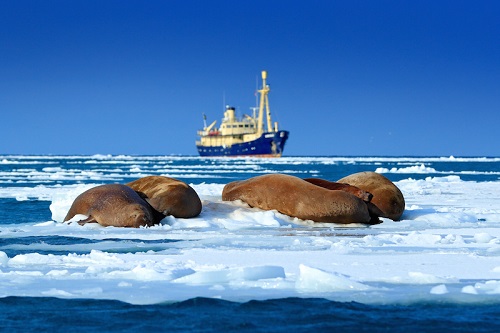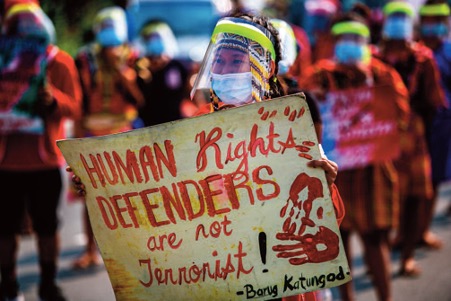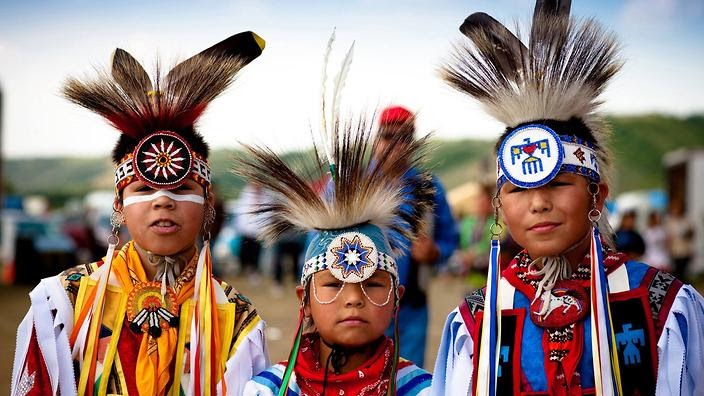Table of Contents
The polar regions, spanning the Arctic and Antarctic, are home to diverse Indigenous communities with unique cultures, languages, and traditional ways of life. For centuries, these communities have stewarded their lands and waters, relying on their profound connection to the environment. However, as these regions experience rapid environmental changes and growing international interest, preserving Indigenous rights and land claims has become increasingly crucial. This article explores the importance of safeguarding Indigenous rights and land claims in the polar regions, shedding light on the challenges and opportunities that lie ahead.
The polar regions, spanning the Arctic and Antarctic, constitute some of the most remote and pristine areas on our planet. These icy expanses are not just landscapes of breathtaking beauty but also home to diverse Indigenous communities, each with its own unique culture, language, and traditional ways of life. These communities have inhabited these polar regions for centuries, honing their deep connections with the environment and stewarding their lands and waters with a profound sense of responsibility.
Cultural richness thrives in the polar Indigenous communities. In the Arctic, the Inuit, Yupik, Saami, and other groups have nurtured vibrant traditions, from storytelling and art to music and dance. These cultural practices aren’t just expressions of identity; they are repositories of knowledge about survival in some of the world’s harshest conditions. For instance, the Inuit’s deep understanding of ice, snow, and wildlife has been crucial for their survival, and this traditional wisdom has immense value in the context of climate change research and adaptation strategies.
The connection to the environment runs even deeper. Indigenous communities in the polar regions rely on subsistence hunting, fishing, and herding practices that are intricately tied to the rhythms of nature. These sustainable practices, developed over generations, exemplify the harmonious coexistence between humans and their surroundings. The preservation of this knowledge is not only vital for these communities but can also offer valuable insights into global efforts for conservation and sustainability.
However, the polar regions are undergoing rapid environmental changes due to climate change. The melting ice, shifting ecosystems, and altered migration patterns of wildlife are affecting the traditional practices of Indigenous communities. These changes threaten not only their way of life but also their physical and mental well-being. The loss of sea ice, for example, impacts the accessibility of hunting grounds and the safety of travel.
Moreover, the polar regions have attracted growing international interest in recent years due to their strategic importance, natural resources, and potential for shipping routes. This increased attention has heightened the need to safeguard Indigenous rights and land claims. Indigenous communities must contend with the delicate balance between economic development and environmental preservation.
The importance of preserving Indigenous rights in the polar regions cannot be overstated. These rights encompass land claims, self-governance, cultural protection, and participation in decision-making processes. Recognizing and respecting these rights is not just a moral imperative but a legal one, as enshrined in international agreements like the United Nations Declaration on the Rights of Indigenous Peoples.
In conclusion, the preservation of Indigenous rights and land claims in the polar regions is not just about protecting the cultural heritage and way of life of these communities; it’s about recognizing the invaluable contributions they can make to our shared understanding of the environment and sustainable practices. As the polar regions continue to undergo transformation, the world must work collaboratively to ensure that Indigenous communities are at the forefront of decisions that affect their lands, cultures, and futures. This collaborative approach presents not only challenges but also opportunities to learn from the resilience and wisdom of these remarkable peoples.
Don’t stop here; you can continue your exploration by following this link for more details: Chapter 3: Polar regions — Special Report on the Ocean and …
The Indigenous Peoples of the Polar Regions
The Arctic is inhabited by Indigenous communities such as the Inuit, Saami, Nenets, and others, while the Antarctic has Indigenous populations like the Selk’nam and Yaghan. These communities have inhabited these regions for generations, forming deep-rooted connections to the land, wildlife, and ecosystems.
nullYou can also read more about this here: Arctic | Places | WWF

Climate Change
The polar regions are experiencing some of the most pronounced effects of climate change. Melting ice, thawing permafrost, and shifting ecosystems directly impact Indigenous ways of life, disrupting hunting, herding, and fishing traditions.
The polar regions, Earth’s climate sentinels, bear the brunt of climate change’s most dramatic manifestations. The consequences reverberate across these pristine landscapes, with melting ice, thawing permafrost, and shifting ecosystems casting a long shadow over the indigenous communities who call these regions home.
1. Melting Ice: The relentless retreat of polar ice is a stark visual reminder of the planet’s warming. For indigenous communities that rely on frozen waterways for transportation, hunting, and access to vital resources, this loss is profound. Traditional ice routes become treacherous, making travel perilous and hunting more unpredictable. The stability that the ice once offered is now replaced by uncertainty.
2. Thawing Permafrost: Permafrost, the frozen foundation of the polar regions, is thawing at an alarming rate. This thaw disrupts not only the landscape but also the infrastructure built upon it. Indigenous communities are grappling with the challenges of eroding shorelines, unstable terrain, and the need to relocate entire villages to escape encroaching coastal erosion.
3. Shifting Ecosystems: As temperatures rise, the delicate balance of polar ecosystems is thrown into disarray. Migratory patterns of wildlife change, affecting hunting and fishing traditions that have sustained indigenous communities for generations. Traditional knowledge, which once provided predictability, must now adapt to these shifting patterns, demanding a deeper understanding of the environment.
4. Food Security: Indigenous communities in polar regions have long relied on the land and sea for sustenance. The changing climate challenges this food security, as species migrate or become less predictable. Communities must adapt by diversifying their diets, incorporating new food sources, and developing innovative ways to ensure nutritional needs are met.
5. Resilience and Adaptation: In the face of these profound challenges, indigenous communities demonstrate remarkable resilience. They are pioneers in adaptation, blending traditional wisdom with modern tools and techniques. From the adoption of more resilient hunting practices to the incorporation of sustainable agriculture and renewable energy, these communities are proactively addressing the impacts of climate change.
6. International Cooperation: The effects of climate change in the polar regions are not isolated; they have global repercussions. Indigenous communities actively engage in international cooperation, sharing their experiences and traditional knowledge to inform climate policies and advocate for sustainable practices. Their voices resonate on the global stage, reminding the world of the urgency of addressing climate change.
7. Cultural Resilience: Indigenous cultures in the polar regions are deeply intertwined with the environment. Climate change threatens these cultures, but it also strengthens their resolve to preserve their identity. Communities are revitalizing traditional knowledge, passing it on to younger generations, and using cultural practices to adapt to the changing world.
In conclusion, the polar regions serve as a stark reminder of the profound effects of climate change. Indigenous communities at the forefront of these impacts exemplify resilience, adaptability, and the harmonious coexistence with nature that is essential for navigating a rapidly changing world. As the global community grapples with the climate crisis, the experiences and wisdom of these communities offer invaluable lessons in sustainability and cultural preservation.
Should you desire more in-depth information, it’s available for your perusal on this page: Polar Bear | Species | WWF

Resource Extraction
Growing global demand for resources has led to increased interest in the polar regions. Mining, drilling, and fishing activities can encroach upon Indigenous territories, posing threats to both the environment and traditional practices.
The growing global demand for resources has indeed cast a spotlight on the polar regions, which are rich in valuable reserves and pristine ecosystems. While this interest holds economic promise, it also raises complex challenges and concerns, particularly for Indigenous communities whose ancestral lands are at the forefront of these developments.
Mining operations in the polar regions, driven by the pursuit of minerals and rare earth elements, have intensified in response to global demand. These activities can disrupt the delicate Arctic and Antarctic environments, potentially leading to habitat destruction, contamination of waterways, and long-lasting ecological consequences. Indigenous communities, often reliant on traditional subsistence practices, are profoundly affected by these disruptions. The extraction of resources can encroach upon their territories, disrupt migratory patterns of wildlife, and introduce pollutants into their food sources, challenging their cultural and physical well-being.
Similarly, drilling for oil and natural gas in these regions poses significant environmental and cultural risks. Oil spills, for instance, can have devastating effects on fragile Arctic ecosystems, impacting marine life and coastal communities that rely on fishing and hunting. The threat of an oil spill, coupled with the noise and infrastructure associated with drilling, can disrupt the traditional practices and way of life of Indigenous peoples who have inhabited these regions for generations.
The fishing industry, too, has witnessed increased activity in polar waters due to the abundance of fish stocks. Overfishing, however, is a growing concern as it can deplete these vital resources and disrupt marine ecosystems. Indigenous communities who rely on fishing for sustenance and cultural identity find themselves competing with commercial fleets, potentially leading to food insecurity and economic disparities.
Amidst these challenges, the importance of Indigenous voices and participation in decision-making processes cannot be overstated. Recognizing Indigenous rights to land, resources, and self-determination is a critical step in addressing the complex interplay between resource exploitation and Indigenous well-being. Collaborative efforts that involve Indigenous communities in resource management, environmental impact assessments, and benefit-sharing agreements are essential for ensuring that their traditional practices and cultural heritage are respected and protected.
Furthermore, responsible and sustainable resource management practices are paramount in mitigating the environmental impacts of resource extraction. International regulations and agreements, such as the Paris Agreement and the Convention on Biological Diversity, underscore the importance of conserving the polar regions and their unique ecosystems. These agreements provide a framework for sustainable development that respects both the environment and the rights of Indigenous communities.
In conclusion, the global demand for resources has brought increased attention to the polar regions, but this interest carries significant environmental and cultural implications. The encroachment of mining, drilling, and fishing activities on Indigenous territories threatens the delicate balance of these ecosystems and challenges the traditional practices of these communities. Collaborative, sustainable, and culturally sensitive approaches are vital in ensuring that resource development in the polar regions benefits both the global community and the Indigenous peoples who call these lands home.
Explore this link for a more extensive examination of the topic: Arctic and Northern Policy Framework

Tourism
The allure of polar landscapes has drawn a surge in tourism. While tourism can bring economic benefits, it also poses challenges related to infrastructure development, waste management, and potential cultural disruption.
The enchanting beauty of polar landscapes has cast a spell on travelers worldwide, leading to a notable surge in polar tourism. While this influx of tourists can undoubtedly contribute to the economic well-being of polar regions, it also presents a complex set of challenges that require careful consideration.
Economic Benefits: Polar tourism has the potential to inject much-needed revenue into remote polar communities. It creates job opportunities, supports local businesses, and diversifies the economic base, reducing reliance on traditional industries like fishing or mining. For many indigenous communities, tourism provides a means to share their cultures and generate income through guided tours, cultural experiences, and artisanal crafts.
Infrastructure Development: However, the rapid growth of tourism can strain the delicate polar ecosystems. The need for infrastructure development, including accommodations, transportation, and visitor centers, can disrupt the pristine wilderness. Balancing the demand for modern amenities with the imperative of environmental preservation is a constant challenge.
Waste Management: Managing the waste generated by tourists in polar regions is a pressing concern. Waste disposal, particularly in remote areas with limited facilities, can pose environmental risks. Stricter waste management policies and sustainable practices are crucial to mitigate the impact of tourism on these fragile ecosystems.
Cultural Disruption: For indigenous communities in polar regions, tourism can bring both opportunities and challenges. While it offers a platform to share their traditions and cultures with a global audience, it also raises concerns about cultural commodification, misappropriation, and the potential for cultural disruption. It is essential to strike a balance that respects and involves local communities in the tourism industry.
Environmental Impact: The influx of tourists can have a direct impact on the polar environment. Disturbances to wildlife, damage to fragile ecosystems, and the introduction of invasive species are all potential consequences of tourism. Conservation efforts and responsible tourism practices are essential to minimize these adverse effects.
Climate Change Awareness: Polar tourism can also serve as a vehicle for raising awareness about climate change. Travelers who witness the dramatic effects of global warming, such as melting glaciers and disappearing sea ice, may become advocates for climate action upon returning home. Education and interpretation programs can enhance tourists’ understanding of the environmental challenges facing polar regions.
Regulation and Sustainability: The management of polar tourism requires comprehensive regulation and sustainability measures. Polar nations, together with international bodies, have a critical role in setting guidelines and standards for responsible tourism. This includes limiting visitor numbers, enforcing strict environmental codes of conduct, and investing in sustainable infrastructure.
In conclusion, while the allure of polar landscapes continues to attract tourists from around the world, the responsible management of polar tourism is imperative. Striking a balance between economic benefits and environmental preservation, respecting indigenous cultures, and addressing the unique challenges posed by these extreme environments is key to ensuring that polar regions remain pristine and accessible for generations to come. Responsible tourism practices can harness the potential of polar tourism while safeguarding these delicate ecosystems and the cultures of the communities that call these regions home.
If you’d like to dive deeper into this subject, there’s more to discover on this page: Arctic communities – WWF Arctic

Recognition of Indigenous Sovereignty
The recognition of Indigenous sovereignty over their lands and waters is fundamental. International agreements and national legislations acknowledge Indigenous land rights and self-determination.
nullShould you desire more in-depth information, it’s available for your perusal on this page: STATE OF THE WORLD’s INDIGENOUs PEOpLEs

Environmental Conservation
Collaborative efforts between Indigenous communities, governments, and conservation organizations aim to protect pristine polar environments while respecting Indigenous land-use practices.
Collaborative efforts between Indigenous communities, governments, and conservation organizations represent a vital alliance forged in the name of preserving our planet’s pristine polar environments. In these regions of unparalleled natural beauty and ecological significance, the shared goal is to safeguard these fragile landscapes while respecting and integrating Indigenous land-use practices that have sustained these communities for centuries.
At the heart of this collaboration is a deep appreciation for the traditional knowledge held by Indigenous communities. They are the original custodians of these lands, with an intimate understanding of their ecosystems, seasonal rhythms, and the interplay between humans and nature. Their wisdom, passed down through generations, offers invaluable insights into sustainable resource management and the delicate balance necessary for coexistence.
Conservation organizations recognize the importance of incorporating this traditional knowledge into their strategies. By doing so, they not only enhance the effectiveness of conservation efforts but also promote a harmonious relationship between humans and their environment. These organizations work closely with Indigenous communities to integrate their land-use practices, such as sustainable hunting and fishing, into conservation plans that prioritize the long-term health of ecosystems.
Respecting Indigenous land-use practices also involves recognizing their spiritual and cultural connection to the land. Sacred sites, traditional ceremonies, and cultural rituals are deeply intertwined with the environment and are essential components of Indigenous identity. Conservation efforts take into account the preservation of these cultural practices, ensuring that the protection of the environment is harmonized with the cultural vitality of these communities.
Government agencies play a pivotal role in this collaborative endeavor by enacting policies and regulations that support Indigenous rights and conservation goals. They work hand in hand with Indigenous leaders to develop protected areas and conservation strategies that reflect the priorities and values of these communities. This includes consultation and the active involvement of Indigenous voices in decision-making processes.
Furthermore, collaborative efforts extend beyond land-based conservation to include marine protection. Indigenous communities have an intimate relationship with the waters of the polar regions, relying on them for sustenance and cultural practices. Conservation initiatives recognize the need to safeguard marine ecosystems, working alongside Indigenous peoples to establish marine protected areas that ensure the health and sustainability of these vital resources.
In summary, the collaborative efforts between Indigenous communities, governments, and conservation organizations in polar regions represent a harmonious approach to environmental preservation. By respecting traditional knowledge, land-use practices, and cultural values, these alliances not only protect pristine polar environments but also honor the deep connection between Indigenous peoples and their ancestral lands. It’s a model of conservation that acknowledges the importance of coexistence and sustainability in safeguarding our planet’s most extraordinary ecosystems.
For a comprehensive look at this subject, we invite you to read more on this dedicated page: STATE OF THE WORLD’s INDIGENOUs PEOpLEs

Co-management Agreements
In some regions, co-management agreements have been established, granting Indigenous communities a role in the decision-making process regarding resource management and environmental protection.
In some regions, co-management agreements have been established, granting Indigenous communities a pivotal role in the decision-making process regarding resource management and environmental protection. These innovative partnerships have not only brought about positive outcomes for both the environment and Indigenous populations but have also set a remarkable precedent for collaborative governance models around the world.
Empowering Indigenous Wisdom: Co-management agreements recognize the deep connection that Indigenous communities have with their lands and ecosystems. By involving them in decision-making, these agreements tap into centuries of traditional knowledge and sustainable practices that are invaluable for effective resource management and environmental protection.
Sustainable Resource Use: Indigenous communities often have a holistic approach to resource management, focusing on long-term sustainability rather than short-term gains. In co-management, this perspective can lead to more responsible resource utilization, reducing over-exploitation and ensuring the preservation of vital resources for future generations.
Cultural Preservation: These agreements not only benefit the environment but also safeguard Indigenous cultures and traditions. By allowing Indigenous communities to practice their customary ways of life, co-management helps preserve unique cultural heritages that are intricately tied to the land and its resources.
Conflict Resolution: In many regions, conflicts between Indigenous communities and government or industry have arisen due to resource extraction and environmental degradation. Co-management agreements provide a structured platform for dialogue and conflict resolution, fostering cooperation instead of confrontation.
Capacity Building: Indigenous involvement in decision-making also facilitates capacity building within these communities. They gain valuable experience in governance, environmental science, and policy, which can empower them in other aspects of their lives, such as education and economic development.
Global Inspiration: Co-management agreements serve as a source of inspiration for collaborative governance models worldwide. As climate change and environmental issues become increasingly pressing, the inclusive, community-based approach seen in these agreements offers a template for sustainable solutions.
Adaptation to Change: Indigenous communities often possess a profound ability to adapt to changing environmental conditions. Co-management agreements allow for flexible responses to environmental shifts, drawing on the Indigenous knowledge of how ecosystems function and how they can adapt to survive in evolving conditions.
Economic Opportunities: These agreements can also create economic opportunities for Indigenous communities through sustainable tourism, eco-friendly enterprises, and the sale of ethically sourced natural products. This can help reduce poverty and increase self-sufficiency.
Legal Recognition: Co-management agreements are often backed by legal frameworks that recognize the rights and sovereignty of Indigenous peoples. This legal recognition can set important precedents for Indigenous land rights and self-determination on a broader scale.
Environmental Justice: By involving Indigenous communities in decision-making, co-management agreements address historical injustices related to land dispossession and environmental exploitation. They aim to rectify past wrongs and create a more equitable future.
In conclusion, co-management agreements that grant Indigenous communities a central role in resource management and environmental protection not only contribute to ecological sustainability but also promote social justice, cultural preservation, and global inspiration for more inclusive governance models. As the world faces increasingly complex environmental challenges, these partnerships offer a path toward a more harmonious and sustainable coexistence between humanity and the natural world.
For additional details, consider exploring the related content available here National-Strategy-for-the-Arctic-Region.pdf

Cultural Revitalization
Initiatives focused on cultural revitalization, language preservation, and traditional knowledge transfer empower Indigenous communities to assert their rights and protect their land.
Initiatives centered on cultural revitalization, language preservation, and the transmission of traditional knowledge play a pivotal role in empowering Indigenous communities to assert their rights and safeguard their ancestral lands. These initiatives represent a profound commitment to preserving the identity, heritage, and wisdom that have sustained these communities for countless generations.
Cultural Revitalization as a Resilience Tool: Cultural revitalization efforts are not just about preserving traditions but also about fostering resilience. By actively engaging in cultural practices, ceremonies, and art forms, Indigenous communities strengthen their sense of identity and belonging. These activities serve as a source of strength and unity, instilling a deep pride in their heritage.
Preserving Languages as Cultural Pillars: Languages are the heartbeats of cultures, and their preservation is paramount. Indigenous languages encapsulate not only a unique way of communication but also the essence of cultural identity. Initiatives to revitalize and teach these languages to younger generations not only ensure their survival but also enable a profound connection to the wisdom passed down through language.
Traditional Knowledge as Environmental Stewardship: The transfer of traditional knowledge from elders to the youth is a cornerstone of sustainable resource management and environmental stewardship. Indigenous communities possess an intricate understanding of their ecosystems, which they have honed over centuries. This knowledge is not only vital for their own subsistence but also contributes to broader conservation efforts.
Empowering Rights and Self-Determination: Cultural revitalization initiatives empower Indigenous communities to assert their rights and exercise self-determination. Through a reconnection with their cultural heritage, these communities gain the confidence to advocate for land rights, protection of sacred sites, and a seat at the table in decisions affecting their territories.
Community Building and Healing: Language preservation, cultural revitalization, and traditional knowledge transfer often serve as catalysts for community building and healing. The process of coming together to celebrate, learn, and pass on traditions creates bonds of solidarity within the community. Moreover, it can address historical traumas and foster emotional well-being.
Transcending Generations: The transfer of traditional knowledge bridges generations, ensuring that the wisdom of elders lives on in the minds and hearts of the youth. This intergenerational exchange not only honors the past but also equips younger generations with the tools they need to navigate the contemporary challenges they face.
Global Solidarity and Awareness: These initiatives not only strengthen Indigenous communities internally but also raise global awareness about the importance of preserving Indigenous cultures and their deep connection to the land. They garner support and solidarity from individuals and organizations worldwide, amplifying the voices advocating for Indigenous rights and environmental conservation.
In conclusion, initiatives focused on cultural revitalization, language preservation, and traditional knowledge transfer are powerful tools for empowering Indigenous communities. They instill a sense of pride, strengthen cultural resilience, and enable these communities to assert their rights and protect their ancestral lands. By preserving their rich heritage, Indigenous peoples not only secure their place in the tapestry of humanity but also contribute valuable insights and wisdom to the broader global effort to address environmental challenges and promote cultural diversity.
You can also read more about this here: Framing co‐productive conservation in partnership with Arctic …

Global Advocacy
Indigenous organizations from the polar regions collaborate on global stages to advocate for their rights, environmental conservation, and climate action. Their voices amplify the importance of Indigenous perspectives in addressing global challenges.
nullIf you’d like to dive deeper into this subject, there’s more to discover on this page: Climate Change In The Arctic: An Inuit Reality | United Nations

Sustainable Practices
Indigenous communities in the polar regions are often at the forefront of sustainable practices. Their knowledge of the land and ecosystems contributes to responsible resource management and environmental conservation.
Indigenous communities inhabiting the polar regions embody a unique synergy with their environments, acting as stewards of these pristine landscapes and demonstrating the profound impact of their sustainable practices. Their intimate connection to the land and ecosystems positions them at the forefront of responsible resource management and environmental conservation efforts.
Central to the sustainable practices of polar Indigenous communities is their time-tested traditional knowledge, which has been passed down through generations. This wisdom encompasses a deep understanding of local flora and fauna, seasonal patterns, and the delicate interplay of natural forces in these harsh environments. Armed with this knowledge, Indigenous communities have honed sustainable hunting, fishing, and gathering practices that ensure the long-term health and balance of their ecosystems.
For example, in the Arctic, the Inuit have perfected techniques for hunting marine mammals, such as seals and whales, that minimize waste and ecological impact. Every part of the animal is utilized, from meat and blubber for sustenance to bones and hides for crafting tools and clothing. Such practices not only ensure the survival of these communities but also preserve the integrity of the marine ecosystem.
In addition to resource management, Indigenous communities in the polar regions are also pioneers in renewable energy solutions. Recognizing the vulnerability of their environments to the impacts of climate change, some communities have embraced sustainable energy sources like wind, solar, and hydroelectric power. These initiatives not only reduce their reliance on fossil fuels but also serve as models for sustainable development in remote areas.
Furthermore, the commitment of Indigenous communities to environmental conservation extends beyond their own territories. They actively engage in advocacy efforts, both nationally and internationally, to raise awareness about the impacts of climate change on polar regions. Their voices are instrumental in shaping policies aimed at mitigating these effects and preserving the unique ecosystems that are vital to the planet’s health.
Collaboration between Indigenous communities and governmental and non-governmental organizations has also led to the establishment of protected areas and conservation initiatives. These efforts work to safeguard critical habitats, conserve biodiversity, and ensure the continued resilience of polar ecosystems in the face of climate change.
In conclusion, Indigenous communities in the polar regions serve as inspiring role models for sustainable practices and environmental conservation. Their profound connection to the land, rooted in centuries of living in harmony with nature, underscores the importance of preserving traditional knowledge and involving these communities as key stakeholders in shaping a more sustainable and resilient future for our polar regions and, by extension, the entire planet.
For additional details, consider exploring the related content available here STATE OF THE WORLD’s INDIGENOUs PEOpLEs

Economic Opportunities
Sustainable tourism, renewable energy projects, and cultural exchanges offer economic opportunities for Indigenous communities that align with their cultural values and respect their land claims.
Sustainable tourism, renewable energy projects, and cultural exchanges are not just opportunities for economic growth but also pathways to empowerment and self-determination for Indigenous communities. These initiatives resonate deeply with their cultural values and provide a means of economic development that respects their ancestral lands and sovereignty.
Sustainable tourism has emerged as a transformative force, allowing Indigenous communities to share their rich cultural heritage and natural surroundings with the world. Visitors are drawn not only to the stunning landscapes but also to the chance to immerse themselves in the traditions, stories, and wisdom of these communities. This form of tourism prioritizes environmental conservation, respecting the fragile ecosystems that Indigenous peoples have safeguarded for generations. It offers economic benefits while enabling these communities to maintain their traditional lifestyles and protect their sacred sites.
Renewable energy projects provide another avenue for economic growth that aligns with Indigenous values. Many Indigenous communities have a deep spiritual connection to the land and a profound understanding of its renewable resources. Harnessing wind, solar, and hydroelectric power not only reduces reliance on fossil fuels but also creates job opportunities and generates revenue for these communities. These projects are often community-owned and operated, allowing them to shape their energy future in a way that aligns with their cultural and environmental priorities.
Cultural exchanges serve as bridges between Indigenous communities and the wider world, fostering understanding and appreciation of their unique traditions. By sharing their knowledge, art, and stories, Indigenous peoples not only enrich the global cultural tapestry but also gain economic opportunities through the sale of their crafts, artwork, and cultural experiences. These exchanges can also be platforms for advocating for Indigenous rights and environmental protection on a global scale.
Crucially, these economic opportunities respect Indigenous land claims and sovereignty. They are not imposed from outside but are collaborative efforts that involve consultation, negotiation, and mutual agreement. This approach honors the right of Indigenous communities to make decisions about their land and resources, empowering them to shape their economic futures on their terms.
In essence, sustainable tourism, renewable energy projects, and cultural exchanges are pathways to economic growth that empower Indigenous communities while preserving their cultural heritage and protecting the environment. They demonstrate that economic development and cultural values can go hand in hand, offering a model of sustainable prosperity that respects the land and traditions that have sustained Indigenous peoples for generations.
To delve further into this matter, we encourage you to check out the additional resources provided here: Indigenous economies in the Arctic | Elementa: Science of the …

Preserving Indigenous rights and land claims in the polar regions is not only a matter of justice but also essential for the well-being of the planet. The deep-rooted connection between Indigenous communities and their environments provides valuable insights into sustainable practices and environmental conservation. As the world grapples with the challenges of climate change and resource management, the knowledge and perspectives of polar Indigenous communities are invaluable. Collaborative efforts to safeguard their rights and preserve their land not only protect their cultural heritage but also contribute to a more sustainable and harmonious future for the polar regions and the planet as a whole.
Should you desire more in-depth information, it’s available for your perusal on this page: STATE OF THE WORLD’s INDIGENOUs PEOpLEs
More links
To expand your knowledge on this subject, make sure to read on at this location: STATE OF THE WORLD’s INDIGENOUs PEOpLEs
